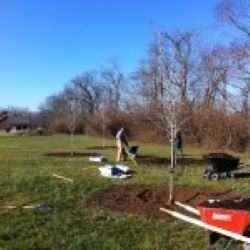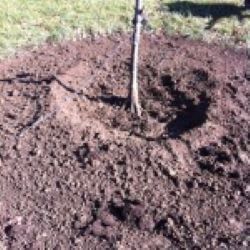Tree Preservation
Tree Preservation
Root and Soil Ecology Health Care, Elder and Historic Tree Care. Compaction and planting depth.


Why Tree Preservation, Root Health Care, Elder and Historic Tree Care?
Elder and historic trees:
- Grow exponentially more than younger trees.
- Are by far the most effective trees at sequestering the carbon which is implicated in global climate change.
- Cool the environment in summer and greatly mitigate storm water runoff.
- Trees and green environments have been shown in studies to: increase human longevity, promote positive physical activity, improve mental health, decrease incidents of disease, shorten recovery times, decrease crime rates, improve stroke survival rates, improve attention spans, decrease rate of cardiovascular disease by up to 50% (in one English study). Source: Dr. Aruni Bhatnagar, Cardiologist, Researcher of Urban Forestry and Human Health, University of Louisville, KY.
- Often struggle in the built environment which is an alien environment (compared to their native forest environment) devoid of nutrient cycling and healthy soil ecology.
- Have a shortened life span without intervention.
- Need specialized, ongoing care in order to be maintained properly.
- Are sensitive to soil compaction and competition with lawns and invasive plants.
- Can be harmed by application of high nitrogen fertilizers which short circuit balanced resource allocation within the tree.
- Can become hazardous but most often those hazards can be managed effectively with ongoing care.
- Need supplemental water in urban environments during droughts. Water once per week, one inch per week, under the entire branch spread, in the absence of rain, May through November. Either rainfall or your watering should equal the one inch per week. Put out a sprinkler and a straight sided soup can or rain gauge and measure one inch per week.
Collaborating on the preservation of an historic Hyde Park tree
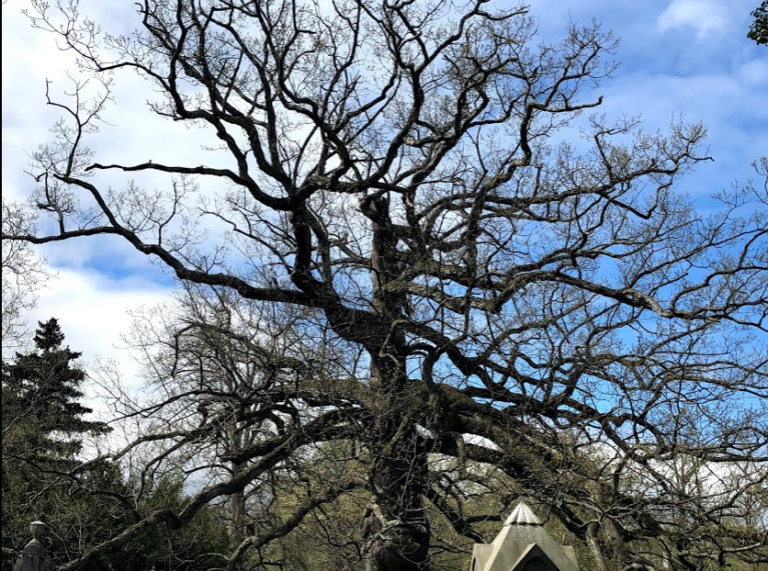
Our Holistic Approach
Arbor Doctor recommends and provides the following measures for the care of your valuable elder and historic trees:
- Initial then periodic assessment and consultation for structural integrity and overall tree health. This often includes a Tree Risk Assessment (TRAQ).
- Ongoing tree health and soil health care initiatives including using composts, biochar, and Finesse GVH, and proper mulching.
- Management of Mature Trees. Structural monitoring and intervention including dead wood removal, retrenchment pruning, structural pruning and tree growth regulators.
Elder and historic tree care is an ongoing process. It is not one and done. However, elder and historic trees cannot be replaced in our lifetime. They increase in biomass faster on an annual basis than younger trees and contribute far more to property values, the environment, and ecosystems. They are worth the investment.
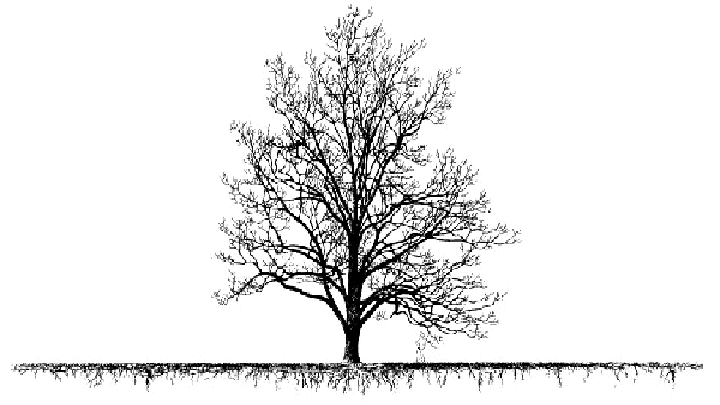
Roots and Soil Ecology are the foundation of healthy trees.
Many trees are planted too deep or are buried in mulch. Soils are compacted. Roots are girdling. Before anything else is done, we need to care for your tree’s roots. Our Basal Tilling, Vertical Mulching, Radial Trenching and Root Collar Excavation services allow us to safely till the soil around the base of your tree, till in organic matter and biochar, and make a better, more forest-like, soil for your tree to thrive in. We can also investigate and correct the tree planting depth and correct any girdling root problems.
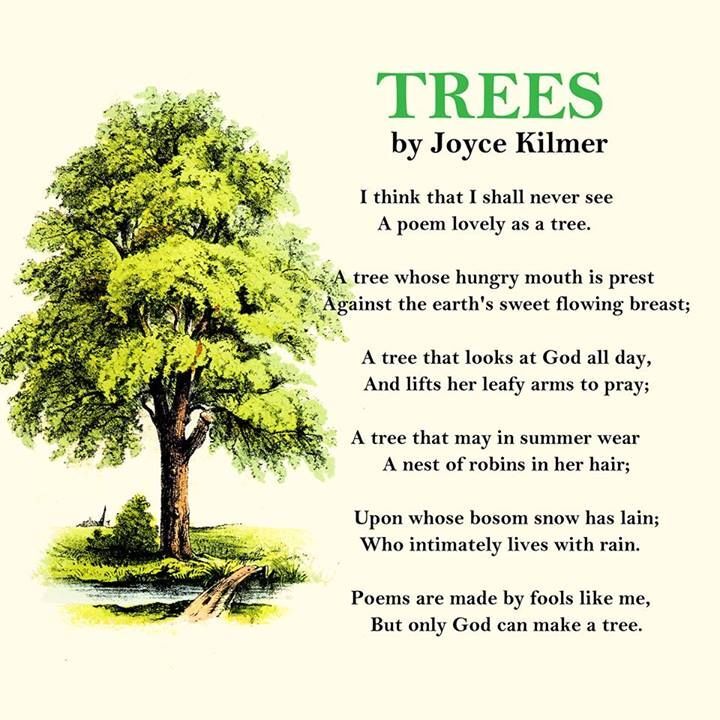
- Bioaeration involves injection of Influence Liquid Soil and Plant Biostimulant With Biological Foods, and VITAL Blend 5M (a blended liquid, combining 5 micron-sized biochar charged with liquid humate) which feeds soil biology, aerates the soil, and enhances tree and shrub health. We inject material into the soil and/or broadcast onto the soil surface.
- Basal tilling: Air knife tilling of 100% of the soil within a given radius, generally 5-7 feet, from the trunk and to a depth of 6-12 inches. Compost and biochar are added to maintain aeration. We include Influence Liquid Soil and Plant Biostimulant With Biological Foods, and VITAL Blend 5M (a blended liquid, combining 5 micron-sized biochar charged with liquid humate) which feeds soil biology, aerates the soil, and enhances tree and shrub health. We will use organic solids with iron for oaks. Ideally, the basal tilled area will be maintained in mulch and not returned to sod. Tree roots grow much better under mulch than in competition with sod.
- Vertical mulching: Holes are punched into the soil on a 2-2.5 foot spacing and to a depth of 6-12 inches. Holes are about 2 inches in diameter and are backfilled with Influence Liquid Soil and Plant Biostimulant With Biological Foods, and VITAL Blend 5M (a blended liquid, combining 5 micron-sized biochar charged with liquid humate) which feeds soil biology, aerates the soil, and enhances tree and shrub health. Vertical mulching is particularly useful in sod areas where more minimal soil sod disturbance is desired, and in areas of perennials or ground covers. Very often, to minimize sod disruption, we will do several rings of vertical mulching outside of a basal tilling radius.
- Radial Trenching. Trenches are excavated with our air knife radially like the spokes in a wagon wheel. Trenches are several inches wide and 6-12 inches deep. Compost and biochar are added to maintain aeration. Influence Liquid Soil and Plant Biostimulant With Biological Foods, and VITAL Blend 5M (a blended liquid, combining 5 micron-sized biochar charged with liquid humate) which feeds soil biology, aerates the soil, and enhances tree and shrub health is included. We will use organic solids with iron for oaks. This is particularly useful for evergreens where complete basal tilling may cause tree destabilization. Radial trenching is not generally done in lawn areas due to its disruptive nature. However, the trees love it!
- Root Crown Excavation (RCE): Often this is done in combination with one of the above applications, or it may be a stand along procedure. RCE involves excavating soil from around the base of a tree with the air knife to examine the underground portions of the root flare, trunk base, and root system. Many trees are planted too deep in the landscape and RCE allows us to determine the proper depth of the root flare and re-establish that. Often, this depth issue has already resulted in improper root growth so a porous aggregate may be used to keep the root collar free. RCE allows us to identify girdling roots and other underground root system defects. RCE may be used as a diagnostic tool in historic tree preservation.
Why do we till to a 6-12 inch depth? 90% of absorbing roots are in the top 12 inches of the soil. This will vary some with soil type but is generally the case in the Cincinnati region.
- Systemic treatments. Applications to ease plant stress or aid in improvement of micronutrient deficiencies, address insect or disease issues, and build tree defenses.
- PolyPhosphite 30™ (0-0-27) is a pure Potassium PolyPhosphite fertilizer solution that is manufactured in a one step process by reacting Phosphorous Acid and Potassium Hydroxide in a patented high temperature, rapid cooling process that preserves the maximum amount of Phosphorous in the desirable H3PO3 (Phosphorous Acid) form. PolyPhosphite 30TM (0-0-27) economically feeds and protects the plant through superior Phosphorous Acid nutrition. PolyPhosphite 30TM (0-0-27) is rapidly absorbed for maximum nutritional benefit in order to prevent and correct nutrient deficiencies and to promote disease resistance.
- Proslide expanded shale is formed when the shale is crushed and fired in a rotary kiln at 2,000 F. (1,093 C.). This process causes tiny air spaces in the shale to expand. The resulting product is called expanded or vitrified shale. This product is a lightweight porous gravel related to the silicate soil amendments perlite and vermiculite. Adding it to heavy clay soil lightens and aerates the soil. Expanded shale also holds 40% of its weight in water, allowing for better water retention around plants. Unlike organic amendments, expanded shale doesn’t break down so soil stays loose and friable for years.
- Milorganite’s slow-release formula provides nitrogen and other nutrients for up to 10 weeks after application. This provides even growth and better root development over a longer period of time, instead of a sudden growth spurt and excessive grass clippings. The slow release nitrogen feeds plants evenly and gradually. It doesn’t interfere with flowering or fruit development. Milorganite also encourages root development, which results in abundant yields. Milorganite adds organic matter to feed the soil. Healthy soil is the key to healthier trees and shrubs. Milorganite is composed of 85% organic matter, which nourishes the plant and feeds the soil microbes. Milorganite delivers organically complex iron throughout the feeding period and won’t stain concrete, unlike iron salts in some synthetic fertilizers.
- Organic soil amendments:
.png)

CarbonizPN™ Soil Enhancer
Healthy plants start with healthy soil. Mirimichi Green Soil Enhancer (CarbonizPN™ Soil Enhancer) helps plants thrive by improving the efficiency of your soil. CarbonizPN™ Soil Enhancer is a professional blend of premium organics and USDA Certified Biobased Carbon that remains in the soil to increase fertility and water absorption while decreasing nutrient leaching. CarbonizPN™ also promotes a healthy, long-lasting biological rhizomes.
Finesse GVH is a powerful biological soil restoration product designed to mimic the biological processes of the forest floor. Over the years while studying problem after problem, it became apparent that most of the issues that we encounter with plants can ultimately be traced back to a lack of biological activity, diversity, and/or balance in the soil. While traditional organic fertilizers, composts, and inoculants would often provide some relief, their overall results were mostly non-transformative or temporary in nature. As we took a step back and tried to understand why, we realized that every unique substance that is applied to the soil is actually a food for select group of organisms. In order to create the proper balance of organisms we need for plants to thrive, not only were we going to have to put the proper foods back into the soil, we were going to have to put them back in the proper ratios. Rather than second guess Nature, we decided to use the forest floor as our inspiration.
Nature is very rhythmic, so we began with the most dramatic part of its cycle, which is the annual leaf fall which brings a huge influx of carbon to the soil. As the piles of leaves accumulate earthworms and other organisms diligently work to break up the mass of organic material and incorporate it back into the soil, providing valuable nutrients to the trees. Unfortunately, in our home landscapes, we instinctively work to remove all of these leaves as part of our “fall clean-up”, but this actually eliminates all of the biology and nutrients that the organic matter would normally give back to the soil to keep it healthy. For this reason, Finesse GVH is loaded with organic carbon that feeds these top level organisms and will bring earthworms in droves to decompose it and turn it into the soil just like a pile of leaves in the forest.
.png)
Out in Nature, the degradation of sticks, limbs, and other cellulose matter leads to the formation of compounds called polysaccharides. These polysaccharides are a major component of the cell walls of fungal organisms, which is why beneficial fungi are known to thrive in the forest. Back in our managed landscapes, however, we find it is difficult to keep fungi at balanced levels because there is an inherent lack of polysaccharides being produced. Finesse GVH contains a complete polysaccharide complex that complements the carbon and induces the formation and development of valuable fungi. The result is a much more balanced and healthy soil.
Since Finesse GVH is often used on “sterile” soils with little biological activity, we incorporate highly biological composts to kick-start the process. These organisms start the degradation process of the carbon and encourage native biology to re-enter the picture and continue the process. At the same time, the use of hydroxycarboxylic acids allows for existing nutrients in the soil to be more readily dissolved and used by plants while the addition of soluble humate facilitates the more complex chemical reactions found in Nature, enhancing the entire process. Humic acids also chelate micronutrients into plant available forms and carry them directly to plant roots for uptake as well sequester nitrogen, preventing its loss from leaching or volatilization and keeping plants healthier while under stress.
When you put it all together, Finesse GVH re-creates the natural processes of Nature. It’s not a fertilizer and it’s not a soil amendment, it a biological restoration amendment. It supplements all the traits of a healthy soil; rich organic matter, stable carbon, diverse biology plus food sources to feed that biology, and powerful nutrient holding and transport compounds that sustain plant health. Common problems like thatch and compaction are naturally eliminated without the need for mechanical tools.
Finesse GVH is manure-free and safe for use on all types of plants and around children and pets.

MitoGrow Aqua 3-IA stimulates root development and growth. This product is not a fertilizer, but does encourage plant growth and can increase root mass by 30 percent in most plant species and up to 50 percent in hardwood plants and trees.
Biochar: A Game-Changer for Soils
By Dave Story in The Landscape Contractor
Everything old is new again. That certainly holds true for biochar, a type of charcoal first produced and used in the Amazon basin centuries ago to make agricultural land more fertile. Biochar results from heating plant waste, or biomass, at high temperatures in little or no oxygen. The process, called pyrolysis, also takes place in naturally occurring fires resulting from lightning strikes. Not only does biochar help soils retain nutrients and moisture, but it remains effective in the soil for hundreds of years – all of which means it can help you better and more efficiently protect the health of your clients’ landscapes. Read the Biochar A Game Changer for Soils article here
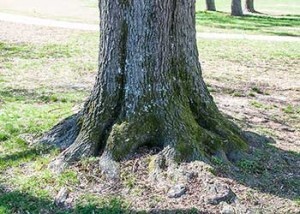
In the forest, tree root flares are near the surface.
Roots radiate out from the trunk like spokes on a wagon wheel. Roots grow in soils with active biology, including beneficial fungi, bacteria, and earthworms. This healthy organic structure is essential for good tree health. Many of these beneficial microorganisms actually replace or repel harmful microorganisms.
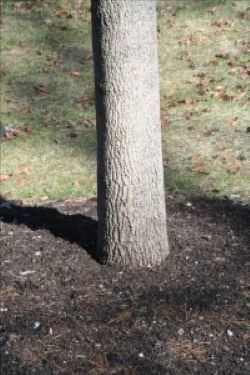
Tree roots need to breathe.
Years of construction, foot traffic, mowing, and lack of soil biology all conspire to suffocate roots. Arbor Doctor solutions help to bring back the good soil structure, good soil biology, and soil oxygen necessary for healthy roots and healthy trees. In our landscapes, tree root flares are often buried. Mulch is piled too high. Soil is compact. Lawns out-compete tree roots. Root systems are less vigorous and less healthy. More information:
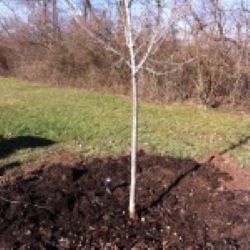
Arbor Doctor’s air knife allows us to:
- Loosen compacted soils.
- Incorporate soil carbon and compost as a basis for restoring soil structure and soil biology.
- Remove excess soil from the root flare.
- Restore the root flare to the proper depth greatly improving long-term viability.
- Correct root defects such as circling and girdling roots (correction options can be problematic. Some defects are “inoperable”!).
- Enlarge mulch zones around trees. While deep mulch is quite harmful, wider mulch rings are essential to good tree health.
See more in this video produced by our friends and partners at Organic Air in Norwalk, Ohio.
Construction has great impacts on trees, short and long term. See more in this great video from California arborist Blair Glenn:
Many of the defects and depth issues which affect trees amount to built in obsolescence. Tree susceptibility to insects and diseases is most often the result of poor root system health and poor soil structure and biology. The restoration of your tree’s root system to a condition as near as possible to that found in nature is extremely important for a tree’s long term success. Don’t wait any longer, take this opportunity to schedule a landscape evaluation now. You can use our easy to use online booking calendar right now. Fill in your information select the day that is convenient for you then press send. Our courteous staff will contact you and confirm your appointment.
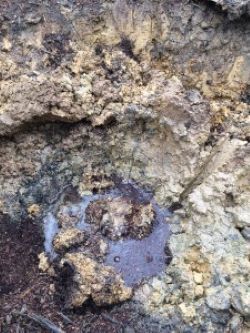
Compacted Soils and the solution!
Compacted soils are the most harmful environmental condition that a tree or shrub can experience. There are other environmental problems such as drought, cold temperatures, and poor drainage, all of which can all be overcome by appropriate plant selection.
The most effective treatments for compaction has been vertical mulching and basal tilling with a tool called an air knife. Because the Air Knife uses high-pressure air, and doesn’t damage roots, Arbor Doctor can treat compacted soils without stressing trees or shrubs. More Details from Athens Clarke County here.
What is compacted soils?
Healthy soil is composed of pore spaces, and organic matter and mineral particles such as sand, silt and clay. Pore space provides room for air and water to circulate around the mineral particles, providing a healthy environment for plant roots and beneficial microorganisms. In compacted soils, the particles are pressed together so tightly that the space for air and water is greatly reduced.
So what is the problem?
Very dense and compressed soil makes it difficult for plants to grow properly. Roots cannot penetrate the compacted soil to obtain the nutrients, water, and structural support they require for survival. Lack of pore space results into the lack of drainage. When the soil is saturated with water, there is no room for oxygen, inhibiting plant growth. The lack of oxygen also inhibits organisms that decompose organic matter, an essential process for recycling nutrients and aerating the soil. Compaction prevents water from percolating properly through the soil, forcing it to run off the surface causing erosion.
What is the Arbor Doctor solution?
Our Basal Tilling and Root Collar Excavation service allows us to safely till the soil around the base of your tree, till in organic matter and biochar, and make a better more forest-like soil for your tree to thrive in. In Basal Tilling we till the soil in a radius around the tree using high pressure air which does not harm the roots. Root collar excavation is a more in depth look at the tree’s trunk flare to inspect for and remove trunk girdling roots and look for hidden signs of stress or decay.
What can you do to avoid and repair compacted soils?
- Avoid working soils when they are wet. Digging or tilling is not recommended in soil that holds its shape when pressed into a ball, as very moist soils are the easiest to compact. When building, choose the smallest piece of equipment that can accomplish the task at hand over an acceptable time period, and restrict the use of that equipment to the footprint of the building area. The heavier the equipment, the more serious the resulting compaction; the wider the equipment, the greater the area that is affected.
- Freeze-thaw cycles can help alleviate shallowly compacted soils, though these natural processes are generally not adequate where compaction was caused by heavy equipment.
- Mildly compacted soils can be overcome by proper plant choice, especially in wet areas.
- Cover bare soils with mulch or groundcovers. Bare soils form a thin surface crust that prevents water from penetrating the soil. A layer of plants or 2-3 inches of mulch will help prevent this type of compaction from occurring.
- Amend the soil. Adding compost to your soil is one of the best ways to combat compaction. As organic materials decompose, they attract soil organisms that naturally aerate the soil through creation of pore space.
- Contact Arbor Doctor now to schedule your landscape evaluation and find out more about how we can remedy your compacted soil issues. Please note that some visits have a cost associated with them. Landscape evaluation charges are credited 100% if we perform a service for you

